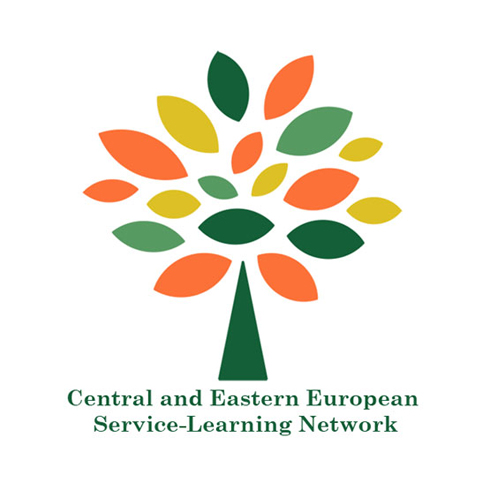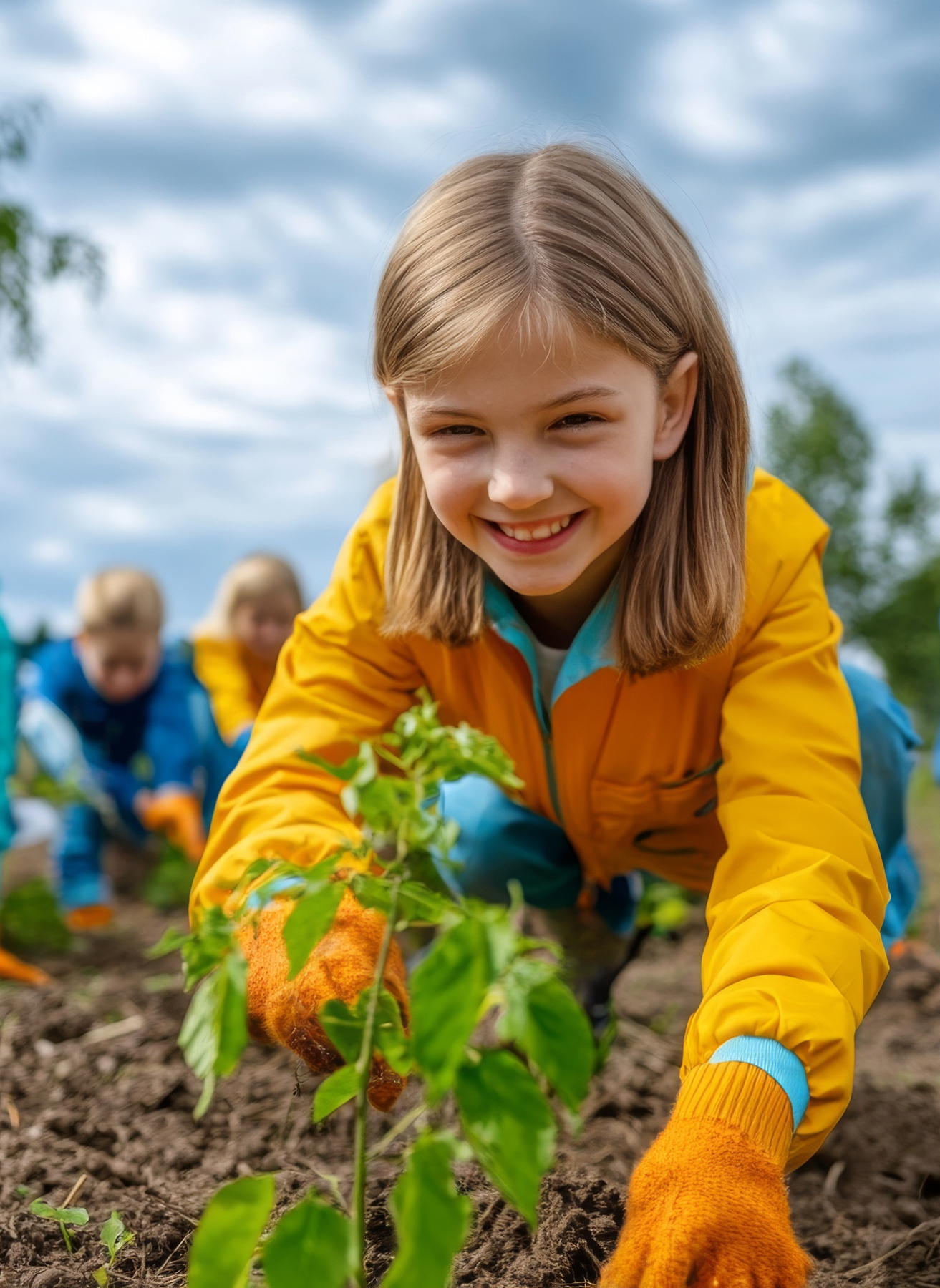At Questfield, we believe that giving back to the community is an important part of education. Our Service-Learning program provides opportunities for students to connect their classroom learning to real-world issues. Through service learning, students learn the importance of civic engagement and social responsibility.



Questfield is officially part of Selegro, of the international schools network Central and Eastern European Network of Service Learning Schools and of CLAYSS. The network includes schools from many countries in our region and its objective is to promote the service learning principles, to encourage involvement in the community and to correlate school`s involvement with cross-curricular learning objectives, through a multi-disciplinary approach. Our school`s adherence to CLAYSS and to CEEN SL promotes collaboration, sharing of best practices and common projects. It is a first step that our school has taken into becoming an active actor of the international schools community.
Seeds of the Future
Service Learning Project, 2024-2025
This year’s Service Learning initiative, “Seeds of the Future,” encourages students to envision the possibilities of life in the decades ahead by answering imaginative and thought-provoking questions. From exploring “What will people celebrate 50 years from now?” to designing futuristic schools, houses, and clothing, the project invites children to visualize a rapidly changing world. By drawing new species of plants and animals, predicting innovations to reduce pollution, or imagining what jobs and skills will define the future workforce, students develop a deep connection between creativity, critical thinking, and sustainability. These inquiries help them reflect on how technological, cultural, and environmental changes may shape their lives and communities.
The methodology behind “Seeds of the Future” is rooted in creative exploration, research, and collaboration. Students begin by brainstorming ideas through open-ended prompts, creating sketches, writing reflective messages to their future selves, and conducting research to ground their visions in reality. Workshops and group activities facilitate peer-to-peer learning, while access to expert insights provides inspiration and guidance for their ideas. By combining art, writing, and discussions, students engage in multidisciplinary learning that blends imagination with problem-solving. Each phase of the project is designed to help them build connections between current challenges, such as pollution and biodiversity loss, and the potential for innovative solutions.
The learning objectives of this program emphasize fostering creativity, environmental awareness, and forward-thinking skills. By answering questions like “What will people eat 50 years from now?” and “What gadgets will classrooms have in the future?”, students develop their ability to envision innovative solutions to global issues. The project cultivates curiosity, critical thinking, and global citizenship, empowering children to see themselves as changemakers who can shape a sustainable and inclusive future. Ultimately, “Seeds of the Future” nurtures a sense of optimism and responsibility, encouraging students to plant the seeds of their ideas for a better world.

When I was Young
Service Learning Project, 2023-2024

Our Service Learning Project, “When I Was Young “, was developed following a comprehensive PBL methodology and is a pivotal part of our educational philosophy, involving the entire school community—students, teachers, and families—in a collaborative journey of discovery and empathy. Through this initiative, we strive to cultivate empathy, respect, and a sense of belonging among our students while honoring our community’s elders.
Project Overview
The “When I Was Young” project integrates various subjects, including Global Perspectives, Philosophy, Science, PSHE, Maths, English, Romanian, PE, History, Geography, Music, Art, and ICT. Our comprehensive approach ensures that students from different grade levels engage in meaningful activities that reinforce their connection to their roots and culture.
Learning Objectives and Steps
Setting Learning Objectives: In collaboration with teachers and students, we establish clear learning objectives that guide our project.
Understanding the Purpose: We delve into the reasons behind our project and the tools we’ll use, ensuring that our actions have a clear direction and purpose.
Skill Development: Students assess their current knowledge and set goals for what they aim to achieve through the project.
Project Design and Proposal: Utilizing leadership roles and the “My Superpowers Chart,” students collaboratively design the project theme and outline their proposals.
Execution and Reflection: Through active participation and reflection, students gain insights and develop a deeper understanding of the project’s impact.
Presentation and Reporting: The culmination of our efforts is showcased in a detailed project report and presentation, sharing our journey and achievements with the community.

Let`s Quester Bloom
Service Learning Project, 2022-2023

The Service Learning project of this academic year is called “Let’s Quester Bloom.” Students began by drafting a survey on what they could do to improve their campus, then identified areas that needed improvement and used their creativity to envision how they wanted those areas to look.
In Arts class, they painted these areas according to their imagination and researched which plants and flowers would be most suitable.
After this research and planning stage, they involved community members, such as parents and partners, to actually carry out the improvements. This stage also involves scheduling an appointment with the Mayor to ask for approval of planting the sidewalks.
The project’s objectives were integrated into subjects such as Arts, ICT, Leadership, Global Perspectives, and Science.
United through Childhood Games
Service Learning Project, 2021-2022

Awarded 1st Place in the in the National Service Learning Awards
The initiative “United for childhood games” was a part of the Service Learning project “Educate the right kind of leaders,” which aimed to support and assist the families of Ukrainian refugees.
We started incorporating Service Learning concepts and methodology when the children identified a need in our community, specifically with the Ukrainian refugee situation. Our students were involved as leaders in the activities and we used childhood games as a tool to connect Romanian and Ukrainian students. This expanded the volunteering services already being provided by humanitarian associations and our parent community, with students from Kindergarten, Primary, and Middle School participating.
During our Service Learning meetings, we recognized the importance of introducing this concept at a young age and as part of a larger project to assist Ukrainian refugees. Together with the students, we identified specific activities that could benefit both communities and create an educational environment based on familiar activities such as games, dances, traditions, habits, and school rules.
Our methodology was based on learning through games and projects, and the children came up with the idea of using self-regulation games for a quick integration of the Ukrainian children. Given that at the age of 5-6s, children are developing through games and movement, we opened a discussion about the games they played with their families.
Our target was to offer emotional support to both Romanian and Ukrainian children through activities organized by the 5-6s Kg Group and the Student Leadership Team. Some of the games proposed by the children included Hopscotch to help them learn the language and numbers, and “Elasticul” (the elastic band) which included a lot of movement, teamwork, and attention skills.
After discussing with the parents of the Ukrainian students who were registered at our school, we realized that their true need was not financial or material assistance, but to make friends and feel integrated in the new environment. Additionally, to find common interests with our students and community and eventually create a bond and sense of belonging. Based on this specific need, we expanded our activities to the larger community of Ukrainian refugees, whose feedback was very positive. They appreciated the fact that the project was based on a real need and not just an assumption. This helped them feel more connected and supported by the community.

